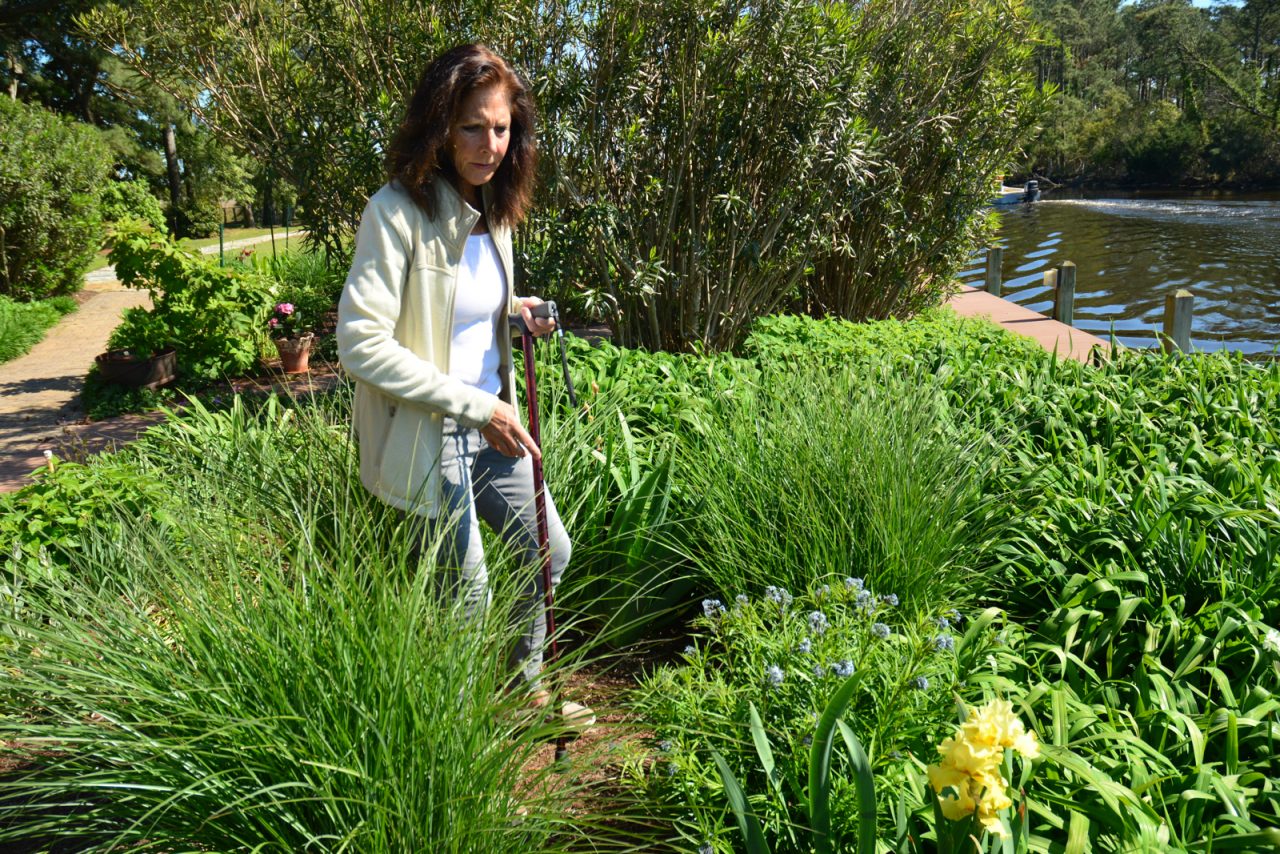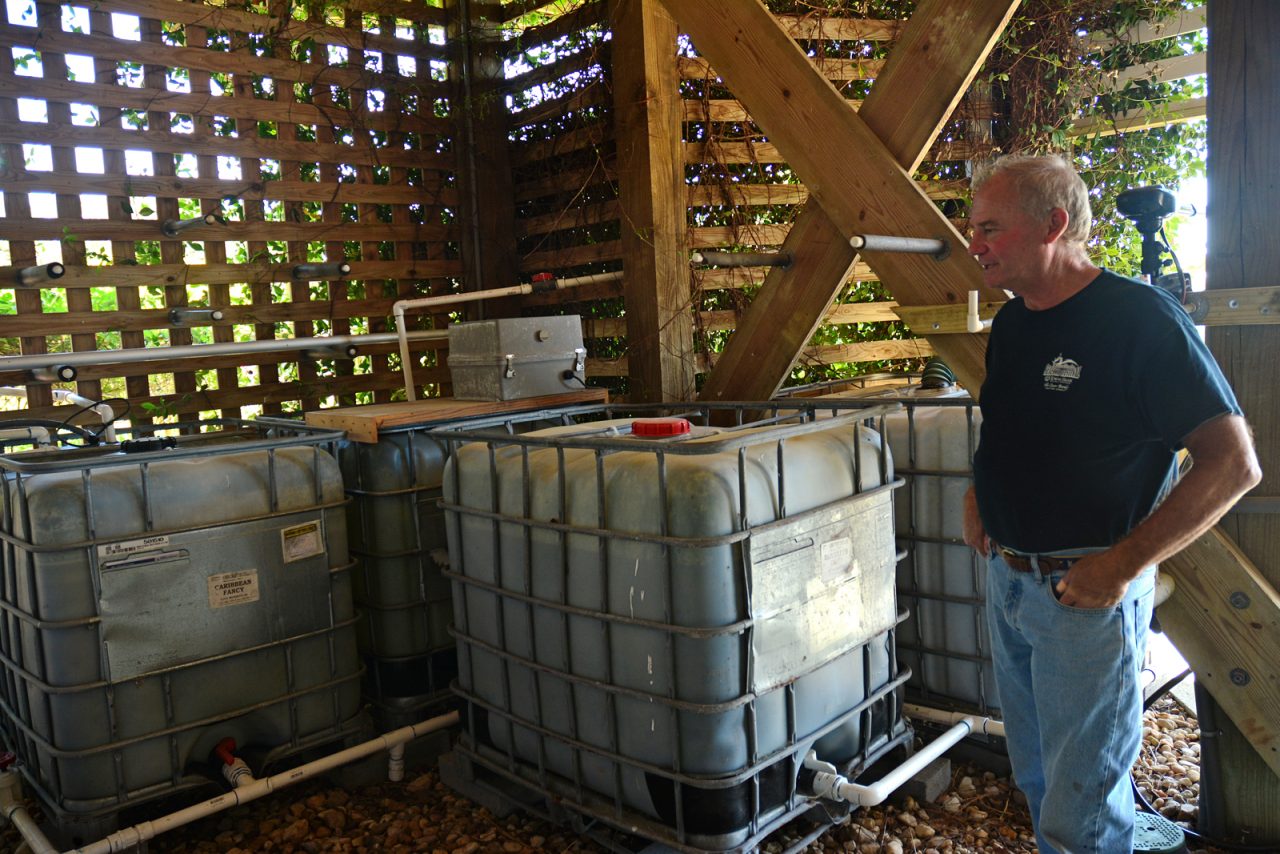
KITTY HAWK — Condensation from the air conditioning unit is what sparked Tom and Vickie Byers to begin capturing water runoff.
“The condensation lines from your AC lines that are always dripping outside everybody’s houses, they’ll fill up a 75-gallon rain barrel in about two days,” Tom told Coastal Review last week.
Supporter Spotlight
“If you ask how we started, that was the first way that we started, collecting the water from our AC,” Vickie added.
The idea behind it, though, began much earlier.
“It’s been with me all of my life, conservation, water quality, and I guess just being here (in Kitty Hawk), being surrounded by water for 27 years,” Vickie said.
For the couple who have lived on the Outer Banks for more than 30 years, seeing the changes that have occurred during that time spurred them to action.
“Over the course of time, just watching another new house, another new retail operation, another new … and the available land here in its natural state continues to decrease. Just in our short time, watching the degradation of water quality that occurs,” Tom said of their concern for the environment. The Byerses’ interest in minimizing their home’s impact drove the couple to create a rainwater system for the whole house and property, but there was another motivating factor as well.
Supporter Spotlight

“When we purchased the house, the yard was fertilized and taken care of meticulously. Out of ignorance, I guess, I put in a system with 75 sprinkler heads. When we got our first quarterly bill, I almost fell over,” Tom recalled.
So, the couple decided they had to do something different. At first, they turned to well water, but that didn’t work.
“It just burned very plant that it touched because we were using a spray system,” Vickie said.
It was about 10 years ago that the couple began the process of capturing water. Over time, their idea has evolved, and rainwater is now used for everything from flushing toilets in the Byerses’ home to irrigating the lawn and plants.
And it began with capturing the condensate from the air conditioner, which the couple soon realized wasn’t going to be the long-term solution.
“We very quickly realized, when Vickie’s running around with her little watering can for an hour, filling it out of a barrel every day wasn’t going to work for us,” Tom said.
What the Byerses found as they thought about putting in a larger cistern and a watering system, was that there didn’t seem to be a lot of knowledge about what they wanted to do.
“Initially, we went to some talks by different organizations and the North Carolina Coastal Federation and even the town (of Manteo). They had a pickle barrel with a spigot on the bottom and we tried utilizing that,” Tom said. “Maybe for an average house with a couple tomato plants and a couple flowers, it works.”
But for what they wanted to do, there seemed to be a lack of local expertise.
“We were trying to pick their brains and they were trying to challenge us saying, ‘Well if you figure it out, call us,’” Tom recalled. “It was a very novel concept.”
What took shape was an integrated system using rainwater runoff from the roof and any place that it could be collected. The water would be stored in cisterns and the cisterns would be connected to the sprinkler system with the 75 heads.
But the Byerses didn’t stop there. They also connected the cisterns to the house to be used for outdoor showers and flushing toilets.
“What we’ve done is completely transition over to all of our sprinkler heads — everything here is all cistern water. Instead of one hose bib we have two. We have a city water hose bib,” Tom said.
“Every spigot that you see around that is red, and I think they’re 13 outside, red equals cistern water,” Vickie said.
It took some innovative thinking to get to where they are now. One of the biggest challenges was finding cisterns large enough to fit their needs. Outer Banks Distilling, a small Manteo distillery making rum, was the answer. Their sugar water was delivered in 275-gallon containers. After the liquid was drained, the company had no use for the containers and was glad to work with the Byerses.
There are four cisterns under the house now.
Filters were needed for the rainwater. Coming off the roof, the water collected anything that was there: leaves, dirt, twigs.
When asked, the couple doesn’t have a clear cost estimate for the system, mostly because there were some missteps along the way.
Although some of the benefits of their rainwater system are not apparent, the Byerses’ flower garden and lawn are lush, visible examples. The flower garden is almost all native plants, something that makes Vickie, who is a North Carolina Cooperative Extension-certified master gardener, particularly proud.
Pointing to a North Carolina Sea Grant coastal landscaping brochure, she said, “I think I have 98% of what’s in here.”
The plants flower at different times of the year, resulting in an burst of colors that changes with the seasons. And because they are native to the area, the garden requires less care and upkeep, and blooms reappear year after year.
It’s part of what the Byerses see as an example of what almost anyone can do to protect the environment, simple steps that make a difference.
“There’s so many things that can be done,” Vickie said. “Like the native plantings, having trees around, like a pervious sidewalk — there’s just so much the layperson can do. Rain barrels, tying your AC lines into rain barrels, that’s a big one.”
Learn more
The Byerses said they welcome contact from others who wish to know more about the technical aspects of their system. Email Vickie at victoriabyers123@gmail.com, and Tom can be reached at soundddog12@gmail.com.








